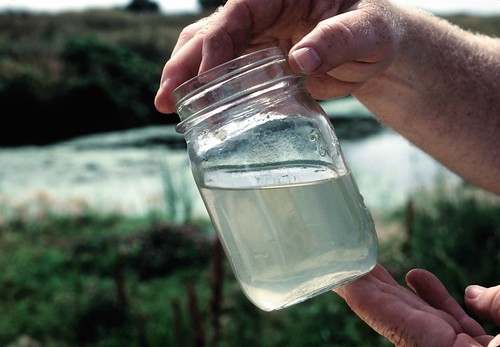
USDA has a long history of working with partners to meet the needs of America’s farmers, ranchers and forest landowners while striving to sustain the natural resources we rely on. American farmers produce food for the U.S. and the world, and also provide benefits for air, water and habitats through the adoption of conservation practices. In recent years, USDA has taken a more innovative approach to conservation by supporting the development of water quality trading markets.
Water quality trading can lower the costs of cleaning up waterways by allowing sources of pollutants with high costs of reducing pollution to purchase credits from others with lower costs. Often agricultural producers have relatively low costs of improving water quality, which makes farmers and ranchers prime candidates to generate water quality credits for sale. This offers the agricultural sector opportunities to improve the natural resource base and earn additional income through credit sales.
However, a tremendous amount of coordination is necessary between those setting up water quality trading markets, participating in trades, and establishing standards to create markets that work.
Under the Clean Water Act, the Environmental Protection Agency (EPA) works with States to meet these standards. States determine which water bodies are “impaired,” and can develop a Total Maximum Daily Load (or TMDL), which is the maximum amount of a pollutant that a water body can receive and still meet water quality standards. Although this may seem simple, the job of determining how much point and non-point sources must reduce, deciding on how improvements will be made, and sorting out how pollutants in different parts of the watershed interact make this a time-intensive—and potentially expensive—process.
In an effort to help States, the Willamette Partnership, with support from USDA’s Office of Environmental Markets, produced a report titled “Building TMDLs to Better Support Water Quality Trading.” The report provides insights into the design of water quality improvement plans that will allow for trading as an option to reduce the costs of enhancing local waterways.
USDA and EPA signed a Partnership Agreement in November 2013 to advance water quality trading and other market-based approaches to conservation, strengthen policies and programs, and to facilitate the development of water quality trading programs. The Willamette Partnership’s recent report identifies opportunities for states to create TMDLs intended to meet EPA’s expectations while also facilitating the voluntary participation of the agricultural sector in improving water quality.
Ken Kopocis, Deputy Assistant Administrator, USEPA Office of Water, said that “EPA applauds USDA for its continuing support to improve water quality. Water quality trading can be a key component of achieving our shared water quality goals.”
Ann Mills, USDA’s Deputy Undersecretary for Natural Resources and Environment, commented that “USDA is committed to working with the States and partners like EPA and Willamette to support water quality trading. Together, we’re better equipped to develop tools that work for States, producers, and others who are striving to improve water quality in rivers, lakes and streams across the U.S.”


